

 |
 |

| Stonetown and Ardeevin, two adjoining rural villages of rich stonewall fenced
pastures trimmed with some moorland and water, interspersed with dwellings that represent
oral and drawing bound plans of a century or more was a selected location for one of the
four schoolhouses in the parish of Boyounagh. Ardeevin National School, 1914 (top) Ardeevin National School, 1955 (bottom) |
 |
 |
| The first national school at Stonetown had the year 1846 on the carved rope edged entrance stone (the figure 4 backwards) and the endowment name Sir. George Gore, the then landowner. Facing west and containing two storeys, males on ground floor and females on first floor, the school was situated almost opposite Stonepark House home of a Keaveney, later Timothy and now Morgan. |
 |
Today the uneven ground level inside a blacksmith made gate and strong stone pillars indicate its location. The last known N.T. (National Teacher) at Stonetown was John O’Keefe who walked in regimental fashion from his home in Glenamaddy.
In 1914, two ground floor male and female schools were opened and served the area until the 1950’s when burned by accident - possibly a fire developed in a broom cupboard. DD Grace, a native of Dunmanway, Co. Cork was Principal - a teacher that provided extra attention to exceptional pupils outside of school hours.
Ballinastack Dance Hall nearby accommodated the classes until 1955 as marked on its entrance stone.
![]()
The year in which the origional Leitra National School was built in is unknown. It was a two storey building built closer to the road than todays building. In 1912 a new school was built. This time it was a one storey building and had four teachers.
The school was divided into two sections; the male side and the female side. On the male side you had the student boys and two male teachers, Mr. Raftery and Mr. Disken. On the female side you had the student girls and two female teachers, Ms. King and Ms. Hoban.
The school closed down in 1976.
![]()
History
| This national school is situated in the Clondoyle - Ballyhard region. It has undergone extensive development in recent years. The old school was completely reformed and improved upon by the Glenamaddy Development and Fás. Below are pictures of what Clondoyle national school look liked three years ago: | 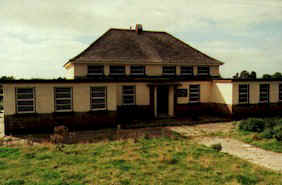 |
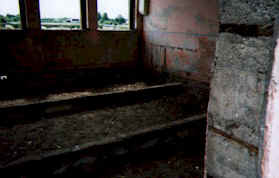 |
 |
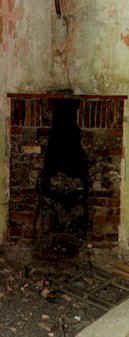 |
Present
| Here are pictures of what the school is like now. It is the new building for the Glenamaddy Community Development Committee. It also acts as a computer training facility. It has been in operation for 1 year and has 12 computers in place at the moment. It is planned that another 16 will be fitted. | 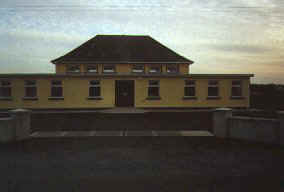 |
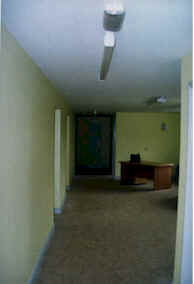 |
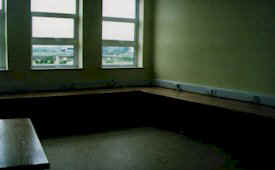 |
 |

Clondoyle National School rear view (above)
Homepage | Rural
| Attractions | List
©Glenamaddy